Table of Contents
The genius of Chick Corea (an analysis – sheet music)
Chick Corea’s short biography
Armando Anthony Corea was born June 12, 1941 in Chelsea/ Massachusetts. His father, a jazz trumpet player, was his first musical inspiration. After several years of exploring the piano and the drum set, Chick started piano lessons with concert pianist Salvatore Sulo.
Best Sheet Music download from our Library.
During short stints at Columbia University and Juilliard, he decided to pursue a professional career as jazz musician and took residence on Seventy First Street in New York. Soon he was busy playing with Mongo Santamaria, Willie Bobo, Herbie Mann, Elvin Jones, Stan Getz, and many others. With trumpeter Blue Mitchell Chick recorded his first original composition, called Chick’s Tune on Blue Mitchell’s LP “A Thing To Do”.
The first LP under Corea’s own name, “Tones for Joan’s Bones”, recorded in 1966, features Joe Farrell (saxes), Woody Shaw (trumpet), Steve Swallow (bass), and Joe Chambers (drums) playing a mixture of Latin, Bop, and Free Styles. More Bebop oriented tunes are recorded on the 1968 follow-up “Now He Sings, Now He Sobs” with Miroslav Vitous on bass and Roy Haynes on drums.
Shortly thereafter, Corea rose to international fame during a three-year stint with the Miles Davis group. With bandmates Dave Holland (bass), and Jack DeJohnette (drums), Corea started exploring the world of Free Improvisation on the recording “Is”. Several recordings with his group “Circle” document further experimentation with free forms. After a
return to more melodic lines and harmonic progressions with his solo piano recordings “Improvisations I & II” for the ECM label, Corea decided to leave Circle and focus back on structure, melody, and harmony. In his Forward to the Warner Bros. publication “The Jazz Styles of Chick Corea”, he explains his change in direction:
“In 1971, an incredible change occurred in my life, directly stemming from some initial studying I did of the works of L. Ron Hubbard, the founder of Scientology, “says Chick. “The result was a seemingly new-found but actually old and hidden goal I had for a long time: to create and communicate the music I love.”
The realization of this goal became his group “Return to Forever”, one of the most influential groups of the Jazz Rock Fusion era. The original members include Stanley Clarke (bass), Joe Farrell (saxes, flute), Flora Purim (vocals, percussion), Airto Moreira (drums, percussion), and Chick Corea (keyboards).
Their self-titled debut and the follow-up record “Light as a Feather” emphasize the fusion of jazz traditions with Latin-American music. The result are some of the most melodic compositions of jazz, such as Corea’s probably most famous piece “Spain” or the playful “Sometime Ago.” After replacing Florim and Moreira with Bill Connors (guitar) and Lenny
White (drums) in 1974, the group became one of the forerunners of electronic jazz.
RTF’s progressive mixtures of jazz concepts, rock and latin-american rhythms, and classical forms are documented on “The Hymn of the Seventh Galaxy” and with guitar virtuoso Al DiMeola on “Where Have I Known You Before”, “No Mystery”, and “Romantic Warrior”. The group went through several personnel changes until it’s final break-up in 1980, including a 13-piece ensemble with strings and Gayle Moran, Corea’s wife, on vocals. The various incarnations and Corea’s extended compositions and arrangements are documented on “The Leprechaun”, “My Spanish Heart”, “Mad Hatter”, “Friends”, and “Secret Agent”.
The years until 1985 were filled with a wide variety of activities, ranging from several duo projects with Herbie Hancock, Gary Burton, John McLaughlin, and Paco di Lucia
among others, over acoustic collaborations with Michael Brecker, Eddie Gomez, and Steve Gadd on “Three Quartets”, to performing Mozart’s Double Concerto with Friedrich Gulda and the Concertgebouw Orchestra.
Inspired by his classical performances, Corea composed his own concerto for piano and orchestra and released his Children’s Songs, a collection of 20 short piano pieces reminiscent of Darius Milhaud’s ragtime and tango influenced piano music.
By 1985, Corea joined forces with young virtuosos John Patitucci (bass), Dave Weckl (drums), and Scott Henderson (guitar) to form The Chick Corea Electric Band. In an
interview for Keyboard Magazine, July 1986, Corea explained that the use of electronic instruments opens up new possibilities of expression and allows him to
communicate with sounds currently familiar to a broader audience.

A recording contract with the GRP label resulted in a series of tours and recordings, such as the self-titled debut, the grammy winning “Light Years” with Eric Marienthal (saxes),
and Frank Gambale (guitar), “Eye of the Beholder”, “Inside Out”, and “Beneath the Mask”.
The Electric Band era concluded in 1993 with the release of “Paint the World”, featuring the Electric Band II with Gary Novak (drums), Jimmy Earl (bass), Mike Miller (guitar), and Eric Marienthal (saxes).
During the 90ies, many jazz musicians discarded the world of electronics and focused on using acoustic instruments and interpreting the traditional standard repertoire. Already during the late 80ies, Corea, Patitucci, and Weckl, had toured and recorded as an acoustic trio. Recording now for his own label, Stretch Records, Corea returned to his acoustic roots with “Time Warp”, a tribute to Bud Powell, and duo
recordings with Bobby McFerrin and Gary Burton, recorded between 1994 – 1997.
In addition, he further explored the world of classical music with “The Mozart Sessions”, conducted by Bobby McFerrin. Most recently Corea formed the sextet “Origin”, a new outlet for his compositions and arrangements.
Corea never seems to sit still, always looking for new, unexpected adventures. But even in the most diverse projects, such as his free-style recordings with “Circle”
compared to the jazz fusion of the “The Chick Corea Electric Band,” Corea’s piano style is easily recognizable and well-defined. While incorporating the traditions of jazz, the ultimate goal of any jazz musician is to develop a personal, recognizable approach to playing by defining some basic conceptual principles.
Those principles provide the unifying threads throughout Corea’s eclectic projects. Following is a discussion of some of those characteristic of a great artist.
Browse in the Library:
| Artist or Composer / Score name | Cover | List of Contents |
|---|---|---|
| ABRSM Piano Exam 2023-24 Grade 3 C3 THE ENTERTAINER – SCOTT JOPLIN |
 |
|
| ABRSM Piano Exam 2023-24 In The Groove by Mike Cornick |
 |
|
| ABRSM Piano Exam 2023-24 Indigo Moon by Elissa Milne |
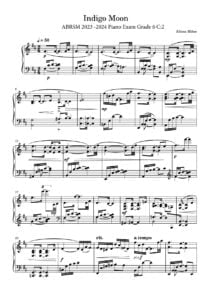 |
|
| ABRSM Piano Exam 2023-24 Jester’s Jig by Chee-Hwa Tan |
 |
|
| ABRSM Piano Exam 2023-24 Love Theme by Catherine Rollin |
 |
|
| ABRSM Piano Exam 2023-24 Minuet In G (Anonymous) |
 |
|
| ABRSM Piano Exam 2023-24 The Song Of Twilight by Yoshinao Nakada |
 |
|
| ABRSM Piano Exam Pieces Grade 1 2013 & 2014 syllabus |
 |
ABRSM Piano Exam Pieces Grade 1 2013 & 2014 syllabus |
| ABRSM Piano Exam Pieces Grade 1 2023 2024 |
 |
ABRSM Piano Exam Pieces Grade 1 2023 2024 |
| ABRSM Piano Exam Pieces Grade 1 2025 2026 |
 |
ABRSM Piano Exam Pieces Grade 1 2025 2026 |
| ABRSM Piano Exam Pieces Grade 2 2023 2024 |
 |
ABRSM Piano Exam Pieces Grade 2 2023 2024 |
| ABRSM Piano Exam Pieces Grade 3 2013 2014 |
 |
|
| ABRSM Piano Exam Pieces Grade 3 2023 2024 |
 |
ABRSM Piano Exam Pieces Grade 3 2023 2024 |
| ABRSM Piano Exam Pieces Grade 3 2025 2026 |
 |
ABRSM Piano Exam Pieces Grade 3 2025 2026 |
| ABRSM Piano Exam Pieces Grade 4 2021 2022 |
 |
ABRSM Piano Exam Pieces Grade 4 2021 2022 |
| ABRSM Piano Exam Pieces Grade 4 2023 2024 |
 |
|
| ABRSM Piano Exam Pieces Grade 5 2023 2024 |
 |
ABRSM Piano Exam Pieces Grade 5 2023 2024 |
| ABRSM Piano Exam Pieces Grade 6 2023 2024 |
 |
ABRSM Piano Exam Pieces Grade 6 2023 2024 |
| ABRSM Piano Exam Pieces Grade 7 2023 2024 |
 |
ABRSM Piano Exam Pieces Grade 7 2023 2024 |
| ABRSM Piano Exam Pieces Grade 8 2023 2024 |
 |
ABRSM Piano Exam Pieces Grade 8 2023 2024 |
| ABRSM Piano Exam Pieces Grade 8 2025 2026 |
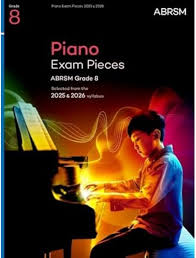 |
ABRSM Piano Exam Pieces Grade 8 2025 2026 |
| ABRSM Piano Mix 3 for Easy Piano Grades 3-4 |
 |
ABRSM Piano Mix 3 for Easy Piano Grades 3-4 |
| ABRSM Piano Prep Test |
 |
|
| ABRSM Piano Scales And Arpeggios from 2021 Guide For Practical Grades |
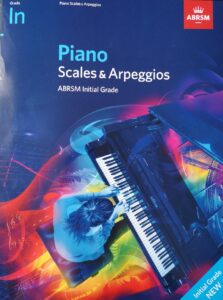 |
|
| ABRSM Selected Piano Exam 2011 2012 Grade 1 |
 |
|
| ABRSM Selected Piano Exam Grade 2 (2011 2012 ) |
 |
|
| ABRSM Specimen Aural Tests Grade 1 to 3 |
 |
|
| ABRSM Specimen Aural Tests Grade 4 & 5 |
 |
|
| ABRSM Teaching notes on piano exam pieces (2013 & 2014) |
 |
|
| ABRSM The Manual Of Scales Broken Chords And Arpeggios For Piano |
 |
|
| ABRSM Theory of Music Exams Grade 8 (The Associated Board of Royal Schools of Music) 2010 |
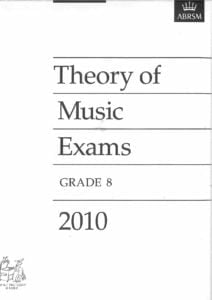 |
|
| AC/DC – Classic – Early Years – High Voltage And Let There Be Rock (Guitar Tab Songbook) |
 |
ACDC – Classic – Early Years – High Voltage And Let There Be Rock |
| AC/DC – Jam With AC/DC (PDF with MP3 audio tracks Guitar Tab Songbook) |
 |
Jam With ACDC |
| AC/DC Rock Score |
 |
|
| AC/DC, Best of (Guitar & Tablature) |
 |
Best Of ACDC (Guitar) |
| Ace Of Base – Beautiful Life | ||
| Ace Of Base – Dont Turn Around | ||
| Ace Of Base – Living In Danger | ||
| Acoustic 33 TOP Guitar Hits (Guitar Songbook) with Tablature – sheet music |
 |
Acoustic 33 TOP Guitar Hits (Guitar Songbook) – sheet music |
| Acoustic Blues Guitar By Kenny Sultan Guitar Tab |
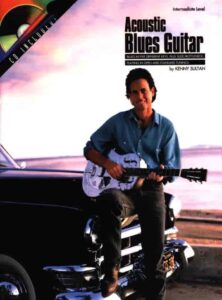 |
Acoustic Blues Guitar |
| Acoustic Blues Guitar Keith Wyatt with TABs |
 |
Acoustic Blues Guitar Keith Wyatt with TABs |
| Acoustic Blues Guitar Styles (Larry Sandberg) (with Tablature) |
 |
Acoustic Blues Guitar Styles (Larry Sandberg) |
| Acoustic Classics 42 songs Piano Vocal Guitar |
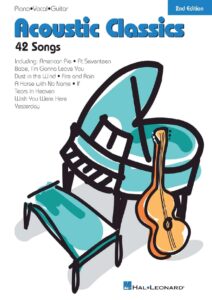 |
Acoustic Classics 42 songs Piano Vocal Guitar |
| Acoustic Guitar Bible (35 great songs) Guitar with TABs |
 |
Acoustic Guitar Bible (35 great songs) Guitar with TABs |
| Acoustic Rock (Guitar) Rolling Stones, Green Day, Pink Floyd, Bob Dylan (Songbook Guitar Tab) with Tablature |
 |
|
| Acoustic Rock 90’s, Best of – Guitar with Tablature |
 |
Acoustic Rock 90’s, Best of – Guitar |
| Acqua azzurra acqua chiara (Battisti) | ||
| Ad Te Levavi (Musescore File).mscz | ||
| Adagio (Lara Fabian) | ||
| Adagio MP3.zip | ||
| Adah’s Theme (La femme avec les yeux lumineux) Sex and the City |
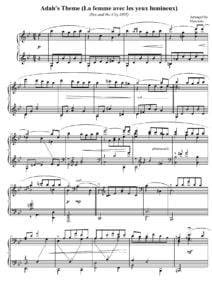 |
|
| Adah’s Theme (Le femme avec les yeux lumineux) Sex and the Cit | ||
| Adam – Adolphe Charles Holy Night Cantique-Nöel |
 |
|
| Adam – Cantique de Nöel Minuit Chretiens | Adam – Cantique de Noel Minuit Chretiens VS | |
| Adam – Derniers souvenirs d’un musicien |
 |
|
| Adam – O Holy Night | Adam – O Holy Night | |
| Adam – Souvenirs d’un musicien |
 |
|
| Adam (Cappeau) – Cantique de Noël. Easy Piano with voice or instrument (Paroles and lyrics) |
 |
Adam-Cappeau-Cantique-de-Noel- |
| Adam (Cappeau) – Cantique de Noel. Easy Piano with voice or instrument.mscz | ||
| Adam Cantique de Nöel Christmas song | Adam Cantique de noel | |
| Adam Carse – The History Of Orchestration Adam Carse |
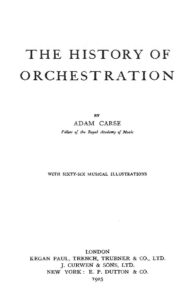 |
|
| Addams Family Theme (Musescore File).mscz | ||
| Addams Family Theme (Easy Piano) |
 |
|
| Addio Colonnello (Ennio Morricone) | ||
| Adele Songs from the Album 21 For SATB, SSA and Piano |
 |
Adele Songs from the Album 21 |
| Adele – 21 |
 |
ADELE 21 SONGBOOK |
| Adele – Chasing Pavements Piano Vocal guitar chords |
 |
|
| Adele – Easy on me (Piano solo with lyrics) |
 |
|
| Adele – Rolling in the Deep |
 |
|
| Adele – Rumor Has It |
 |
|
| Adele – Set Fire to the Rain |
 |
|
| Adele – Set Fire To The Rain (2) (Musescore File).mscz | ||
| Adele – Someone Like You | Adele – Someone Like You | |
| Adele – Someone Like You easy piano |
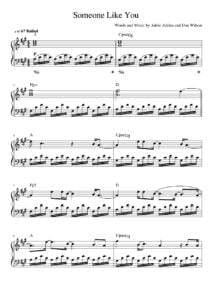 |
|
| Adele – The Best Of SongBook (12 songs arranged for easy piano) |
 |
Adele – The Best Of SongBook (12 songs arranged for easy piano) |
| Adele 19 [Piano, Guitar, Vocals] |
 |
Adele 19 [Piano, Guitar, Vocals] |
| Adele 25 Songbook |
 |
Adele 25 Songbook Contents —  |
| Adele Best Of Adele Big Note Piano (Adele Adkins) |
 |
Adele Best Of Adele Big Note Piano (Adele Adkins) |
| Adele Easy On Me Sheet Music |
 |
|
| Adele Original Keys For Singers (Adele) |
 |
Adele Original Keys For Singers (Adele) |
| Adele Skyfall (Piano Vocal Guitar Chords) | Adele Skyfall (Piano Vocal Guitar Chords) | |
| Adios Amor – Goodbye My Love as recorded by José Feliciano |
 |
|
| Adult All In One Course Level 1 With Audio Mp3 (Willard Palmer) |
 |
Lessons Alfred’s Basic Adult Piano Course Level 1 |
| Adult All In One Course Level 2 With Audio Mp3 (Willard Palmer) |
 |
Willard Palmer – Adult All-In-One Course Level 2 |
| Adult Greatest Movie Hits Piano Level 1 |
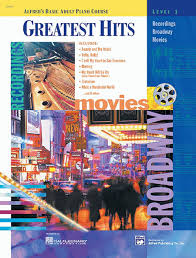 |
Adult Greatest Movie Hits Piano Level 1 |
| Adult Piano Adventures ALL-IN-ONE PIANO COURSE 1 |
 |
|
| Adult Piano Adventures All-In-One Piano Course Book 2 Book With Media Online (Nancy Faber, Randall Faber) Sheet Music |
 |
|
| Adult Piano Adventures Christmas – Book 1 (Nancy Faber Randall Faber) |
 |
|
| Adult Piano Adventures Christmas – Book 2 |
 |
Adult Piano Adventures Christmas – Book 2 |
| Adult Piano Adventures Popular Book 1 – Timeless Hits and Popular Favorites (Adult Piano Adventures Popular) |
 |
Adult Piano Adventures Popular Book 1 – Timeless Hits and Popular Favorites (Adult Piano Adventures Popular) |
| Adult Piano Course Greatest Movie Hits Piano Level 1 Recordings Broadway Movies |
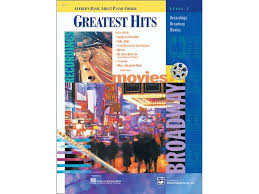 |
Adult Piano Course Greatest Movie Hits Piano Level 1 Recordings Broadway Movies |
| Advanced Harmonic Concepts by Wayne Naus (with audio MP3) |
 |
Advanced Harmonic Concepts by Wayne Naus |
| Advanced Harmonic Exercises For Jazz Piano |
 |
advanced harmonic exercises |
| Advanced Piano Solos 1 Encyclopedia by Tom Roed |
 |
Advanced Piano Solos 1 Encyclopedia by Tom Roed |
| Advanced Piano Solos 2 Complete by Tom Roed |
 |
Advanced Piano Solos 2 Complete by Tom Roed |
| Advanced Sacred Music Piano Solos by John Kraus |
 |
|
| Advanced Scale Concepts and Licks for Guitar (PDF + MP3 audio tracks Play Along) with Tablature |
 |
 |
| Aebersold – 110 – When I fall In Love – Romantic Ballads pdf with embedded audio MP3 Tracks |
 |
Jazz Play Along Vol 110 [When i Fall in Love] |
| Aebersold – 113 Embraceable You – Vocal Standards with audio MP3 Tracks |
 |
Jamey Aebersold – Vol 113 |
| Aebersold – 30 blues scale By Jamey Aebersold | Aebersold – 30 blues scale By Jamey Aebersold | |
| Aebersold – A New Approach To Jazz Improvisation Gettin’it together vol. 21 |
 |
aebersold gettin all together vol 21 |
| Aebersold – Practice Procedures For Memorizing Scales And Chords | Aebersold – Practice Procedures For Memorizing Scales And Chords | |
| Aebersold – Rapid Reference Vol 1-114 | Aebersold – Rapid Reference Vol 1-114 | |
| Aebersold – Vol 01 – How to Play and Improvise Jazz (with audio MP3) |
 |
Aebersold – Vol 01 – How to Play and Improvise Jazz |
| Aebersold – Vol 03 – The II-V7-I Progression Jazz Play Along Book + Audio Mp3 |
 |
|
| Aebersold – Vol 105 – Dave Brubeck Jazz Play Along Book + Audio Mp3 |
 |
|
| Aebersold – Vol 118 – [Groovin Jazz] (with audio MP3) |
 |
|
| Aebersold – Vol 32 – Ballads Jazz Play Along Book + Audio Mp3 |
 |
|
| Aebersold – Vol 34 – Jam Session Jazz Play Along Book + Audio Mp3 |
 |
Includes MP3 Play along themes as Blue moon, The shadow of your smile, Over the rainbow, etc. |
| Aebersold – Vol 45 – [Bill Evans] Jazz Play Along Book + Audio Mp3 |
 |
Aebersold – Vol 45 – [Bill Evans] |
| Aebersold – Vol 58 – Unforgettable Standards Jazz Play Along Book + Audio Mp3 |
 |
aebersold unforgettable standards sheet music |
| Aebersold – Vol 76 – David Baker – How To Learn Tunes (A Jazz Musician’s Survival Guide) |
 |
how to learn tunes |
| Aebersold 25 How To Practice By Jamey Aebersold | Aebersold 25 | |
| Aebersold Antonio Carlos Jobim Vol 98 – Bossa Nova Songbook Jazz Play Along Book + Audio Mp3 |
 |
Aebersold Antonio Carlos Jobim Vol 98 – Bossa Nova Songbook |
| Aebersold Anyone Can Improvise – 52 Points To Remember | Aebersold Anyone Can Improvise – 52 Points To Remember | |
| Aebersold Jazz EAR training (with audio MP3) |
 |
Aebersold Jazz EAR train |
| Aebersold Jazz Handbook 09 Tips For Learning A New Tune & Practice Procedures For Memorizing |
 |
Aebersold Jazz HANDBOOK |
| Aebersold Jazz Play-Along Books & audio MP3 1st Part Full Collection – Vol 1- 40 (with MP3) for all instruments |
Compressed file  Aebersold Full Collection Part 1 – Vol 1- 40 Aebersold Full Collection Part 1 – Vol 1- 40 |
40 volumes with MP3 Aebersold Book Index Vol.001-106 |
| Aebersold Jazz Play-Along Books & audio MP3 2nd Part Full collection Vol 41- 75 for all instruments | Compressed fileAebersold Full Collection Part 2 – Vol 41- 75.. | 35 volumes with MP3 Aebersold Book Index Vol.001-106 |
| Aebersold Jazz Play-Along Books & audio MP3 3rd Part Full Collection – Vol 76- 112 (with MP3) | Compressed fileAebersold Full Collection Part 3 – Vol 76- 112 | 37 volumes with MP3 Aebersold Book Index Vol.001-106 |
Chick Corea’s piano style
A. Technique
- In one of his poems from his music poetry, Chick writes: “Discipline your body, discipline your instrument…”. His clean and clear attack and mastery of his instrument demonstrates such principles.
- His articulation is always precise and clean no matter if he plays a Steinway grand piano, a Fender keyboard, or his Yamaha strap-on keyboard. Corea’s keyboard solo on “Got A Match” on The Chick Corea Electric Band is exemplary for his clear articulation even at extreme speeds.
- Corea’s touch can be very powerful, using the piano foremost as a percussion instrument. One example is on An Evening With Herbie Hancock, where he plays the
vamp figure of “La Fiesta” at the beginning so forceful and with minimal key contact, that it sounds more like a drum groove than a piano vamp. - On the other hand, he can be very sensitive and tasteful. Some examples are his romantic soloing on “Where Have I Known You Before” on the similarly titled album and his interpretations of his own “Children’s Songs.”
- He doesn’t limit his palette of sounds to conventional means of playing the piano keys. Especially during duo or trio performances, one can frequently observe Corea
plucking the strings inside the piano and experimenting with different ways of preparing the strings. Such experimentation were personally witnessed during his
concerts at the 1996 IAJE convention, and can also be heard on “Fragments” and “Duet for Bass and Piano No. 2” on the record Circling In. - Chick Corea’s use of baroque-like embellishments are heard rather frequently in his playing. Sometimes he’ll just fill out melodic intervals chromatically, as in the following example.

His complete independence of right and left hand is also a strong component of Chick Corea’s technique. Such independence enables him to provide bass ostinatos and rhythmic accents complimentary to right-hand melodies. A short excerpt from his solo on “La Fiesta” exemplifies this ability.

B. Rhythm
- Chick Corea’s preference for Latin-American rhythms has become a trademark of his style. The choice of song titles, such as “La Fiesta,” “Spain,”” My Spanish Heart,” “Samba
Song, “or “Señor Mouse” already indicate such preferences. His piano accompaniments often combine Latin-American rhythms with jazz harmonies.
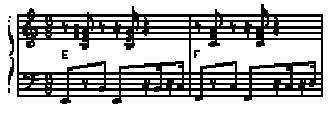
2. Sophisticated rhythmic interplay and precise timing are very prominent in Chick Corea’s comping and soloing. Being an accomplished drummer, he has a wide repertoire of
rhythms and the ability to execute them with confidence and perfect timing. Such rhythmic variety adds interest and excitement to his music.
3. Often, his syncopation and his ability to play different rhythms with each hand create polyrhythmic effects.
The rhythmic organization of his melodic lines, often referred to as phrasing, also displays his rhythmic mastery and versatility. Although the typical strings of eighth notes dominate Chick Corea’s soloing, he knows how to place rests and other rhythmic values effectively to create logical, congruent lines.
C. Melodic Characteristics
One main aspect of jazz improvisation is to create interesting melodic lines in relation to a repeating harmonic structure. Therefore, the pitch content of melodic lines needs to be discussed in reference to the underlying harmonies. As a result, some aspects in the analysis of melodic and harmonic elements will overlap.
The melodies of Corea’s compositions are very lyrical and memorable, many of his songs have become part of the standard repertoire of jazz musicians. Some examples
are “Spain,” “Windows,” or “Humpty Dumpty”. During his improvisations, he combines such lyricism with complex rhythmic and harmonic twists.
Some of his most lyrical improvisations are captured in his “Piano Improvisations I & II” and his solo rendition of “Where Have I Known You Before.”
Rooted very much in the Bebop tradition, Corea’s improvised lines are dominated by long strings of eighth notes shaped in the sinoid waveforms. Especially at faster tempos, such dominance of eighth note values is apparent.
Corea often prefers lydian and altered scales to add tension and color to his improvised lines. Especially, diminished scales (half step/ whole step alternating) used in relation to dominant chords can be frequently detected in his solos.
Jazz musicians often develop favorite melodic patterns and runs that make their style recognizable. Corea often uses a chromatic ascending pattern and short embellishments at the beginning of lines.
D. Harmonic Characteristics
Studying the classical literature and composition has influenced Corea’s harmonic vocabulary. Similarities to the harmonic innovations of the French romantics such as
Claude Debussy and Maurice Ravel can be detected. Corea displays preferences for wide, open sounds with frequent uses of Ma7#11 chords.
During his years with John Coltrane, pianist McCoy Tyner developed a new harmonic approach by using voicings based mainly on the interval of a fourth. This technique became the essence of the modern piano sound. Similar voicing techniques can be detected in Corea’s playing.
Corea’s harmonic progressions often depart from the traditional functional harmony, which depends mainly on the II-V-I relationship. One technique for harmonic
expansion is the use of poly chords, which consist of harmonies with foreign bass notes or two harmonies layered on top of each other.
Other techniques for harmonic expansion are the use of ostinati and pedal points. Both techniques are apparent in Corea’s compositions and performances. Pedal points provide a suspended feel to the harmonic movement and create tension to be released with the departure from the pedal point.
Especially in his cycle of “Children’s Songs”, Corea frequently uses ostinati to create accompaniments.

Finally, Corea often employs parallel movement of harmonies of the same quality. This is another technique to avoid functional harmony while still creating logical
harmonic movement.
It Could Happen To You (Live / Show 1 / January 3, 1998)
Chick Corea’s Arrangement and Solo on “It Could Happen to You”
Please, download a transcription of Chick Corea’s arrangement and two solo choruses on the standard “It Could Happen to You” by Jimmy Van Heusen and Johnny Burke (from the songbook “Chick Corea Plays Standards”)
This performance with Corea’s most recent group “Origin” was captured in February 1998 during an engagement at New York’s jazz club “Blue Note”. Many of Corea’s style characteristics discussed earlier are apparent in this transcription.
The following analysis will focus on these special characteristics. “It Could Happen to You” is a 32-bar song, composed in two similar 16-bar sections. After a rubato solo piano introduction, Corea states the head, supported by Avishai Cohen on drums and Adam Cruz on drums. Steve Davis on trombone, Bob Sheppard on tenor sax, and Steve Wilson on alto sax join for the last four measures.
In order to reinforce his liberal treatment of the melody, Corea adds, deletes, and substitutes some of the original harmonies. In measure 3, Corea adds an Am passing
chord, then proceeds chromatically up to C. Furthermore, a string of chromatically descending, parallel dominant chords substitutes for the original tonic – subdominant progression in measure 5 and 6.
Instead of the regular ii-V Turnaround in measures 15 and 16, Corea harmonizes the melody in triads to a step-wise descending bass line, a technique discussed earlier under harmonic characteristics. Finally, he suspends the resolution to the tonic in measure 31 by laying a C-pedal point for the final 6 measures of the head.
Corea begins his solo with a melodic sequence, emphasizing the #11 of F-Major in measure 37. The sequence continues with embellishments until measure 41. For the turnaround in measure 46 and 47, Corea chooses to use a D-Major Scale, brightening up the sound of the F-Major harmonic basis from one flat to two sharps.
In order to lead back to the F-Major tonic, Corea moves up chromatically, implying E-Major during measure 48. Similar to the tonic-subdominant substitution with a string of
dominant chords during the head in measure 21-24, Corea plays a descending, chromatic sequence from Bb13 to G13 in measure 54.
He completes his first chorus with a C-pedal point. During m. 61-64, Corea melodically implies a progression of Dm7, Ebm7, Ab, G7b9 over the C-pedal point as a turnaround to the F-Major tonic in m.65.
During the second chorus, Corea concentrates more on rhythmic aspects for his improvised lines. In m. 67/ 68, he crosses the bar lines with a hemiola, leading to a syncopated repetition of C’s doubled at the octave over the course of the following three measures. Echoing the thought, Corea states a series of B’s in measure 75 and 76.
In relation to the F Major harmony in measure 75 , B is the #11, one of Corea’s favorite harmonic option to brighten up major chords. Again, he implies a series of triads over an ascending bass line to close the first half of the second chorus. Block harmonies characterize the improvisational approach for the second half of the chorus. Instead of the C-pedal point, Corea increases tension and intensity by leading into the third solo chorus with an ascending B-Major scale, accented by syncopated, ascending fourths in the left hand.
In closing this discussion of Corea’s piano style, the following basic principles can be extracted from the analysis. With a clear touch, a clean technique, and a very strong sense of rhythm, Corea is well-equipped to realize his quest for communication through his music.
Some of his most prevalent melodic techniques are the frequent use of embellishments, lydian and altered scales, and some typical chromatic patterns. Harmonically, Corea frequently uses voicings based on the interval of a
fourths, poly chords, non-functional progressions, pedal points, and ostinati.
In summary, Corea’s artistry is based on a strong command of his instrument and contemporary harmonic techniques. Naturally there is a deeper level to artistry than just the surface of technique, rhythm, melody, and harmony. Personal attributes such as creativity, inventiveness, spontaneity, or flexibility are just as important as musical
characteristics.
Nevertheless, the previous analysis can be helpful for students of jazz piano and jazz in general in developing their own, personal concepts. Not only jazz performers may benefit from such an analysis, but also listeners of jazz in order to develop a stronger appreciation and understanding of one artist’s accomplishments.
Please, subscribe to our Library.
If you are already a subscriber, please, check our NEW SCORES’ page every month for new sheet music. THANK YOU!
Browse in the Library:
| Artist or Composer / Score name | Cover | List of Contents |
|---|---|---|
| (500) Days Of Summer Piano Theme ( Mychael Danna, Rob Simonsen) | (500) Days Of Summer Piano Theme ( Mychael Danna, Rob Simonsen) | |
| 10,000 Maniacs Because The Night Piano Solo sheet music |
 |
|
| 100 Golden Standards The World’s Best Piano Arrangements by the greatest pianists of the Century |
 |
The World’s Best Piano Arrangements |
| 100 Great Keyboard Intros Songbook |
 |
100 Great Keyboard Intros Songbook |
| 100 Greatest Film Scores (Book) by Matt Lawson & Laurence E. MacDonald |
 |
|
| 100 greatest POP songs |
 |
100 greats pop songs |
| 100 Greatest Songs of Rock & Roll, Selections From Piano Vocal Guitar Sheet Music |
 |
100 Greatest Songs of Rock & Roll, Selections From Piano Vocal Guitar Sheet Music |
| 100 Hits Simply The Best – Guitar (Die besten Songs aus Pop Rock) German |
 |
100 Hits Simply The Best (Die besten Songs aus Pop |
| 100 Jazz & Blues Greats Book |
 |
100 Jazz & Blues Greats |
| 100 Jazz Solos & Etudes by Jacob Wise |
 |
100 Jazz solos |
| 100 Light Classics For Piano Solo |
 |
100 Light Classics For Piano Solo |
| 100 Most Beautiful Christmas Songs Easy Piano Vocal |
 |
100 Most Beautiful Christmas Songs Easy Piano Vocal |
| 100 Most Beautiful Christmas Songs Piano Vocal Guitar |
 |
100 Most Beautiful Christmas Songs Piano Vocal Guitar |
| 100 Must-Know Jazz Tunes with MP3 audio tracks to Play Along |
 |
100 Must-Know Jazz Tune – C version |
| 100 of the Best Movie Songs Ever! Piano Vocal Guitar |
 |
100 best movie songs 1&100 best movie songs 2 |
| 100 Of The Best Songs Ever For The Keyboard by Daniel Scott |
 |
100 Of The Best Songs Ever For The Keyboard |
| 100 Piano Solos (100 popular standards of today arr. by Frank Booth) with guitar chords |
 |
100 piano solos 1 |
| 100 Pop Hits Of The 90’s by Dan Coates |
 |
100 Pop Hits Of The 90’s by Dan Coates |
| 100 Rock N Roll Standards Piano Vocal Guitar chords |
 |
100 Rock N Roll Standards Piano Vocal Guitar chords contents |
| 100 Songs For Kids – Easy Guitar Lyrics with Tablature |
 |
100 Songs For Kids – Easy Guitar Lyrics |
| 100 Tunes Every Musician Should Know Professional Chord Changes And Substitutions By Dick Hyman |
 |
100 Tunes Every Musician Should Know Professional Chord Changes And Substitutions By Dick Hyman |
| 100 Ultimate Blues Riffs For Piano Keyboards |
 |
100 ultimate riffs jazz piano |
| 100 Women Of Pop And Rock 100 songs by 100 artists |
 |
100 Women Of Pop And Rock 100 songs by 100 artists Piano Vocal Guitaral Leonard |
| 100 Years Of Popular Music 1980s Part Two Piano Vocal Guitar Chords |
 |
100 Years Of Popular Music 1980s Part Two Piano Vocal Guitar Chords |
| 1000 Examples of Musical Dictation (Ladukhin, Nikolay) | 1000 Examples of Musical Dictation | |
| 1000 Words – Final Fantasy X-2.mscz | ||
| 1001 Blues Licks by Toby Wine – Piano |
 |
1001 Blues Licks by Toby Wine – Piano |
| 1001 Jazz Licks A Complete Jazz Vocabulary For The Improvising Musician (Jack Shneidman) |
 |
1001 Jazz Licks A Complete Jazz Vocabulary For The Improvising Musician (Jack Shneidman) |
| 101 Cançoes Que Tocaram O Brasil Nelson Motta (Book) (Brazilian Portuguese) |
 |
|
| 101 Frank Sinatra Hits For Buskers |
 |
101 Frank Sinatra Hits For Buskers |
| 101 Mississippi Delta Blues Fingerpicking Licks Guitar and TAB by Larry McCabe |
 |
Larry McCabe – 101 Mississippi Delta Blues Fingerpicking Licks |
| 101 Must-Know Blues Licks (Guitar Educational) (Wolf Marshall) PDF + MP3 audio tracks Play Along with Tablature |
 |
101 Must-Know Blues Licks (Guitar Educational) (Wolf Marshall) |
| 1015 Songs – The Original Musicians’s (Musicals) |
 |
1015 Songs – The Original, Musicians’s (Musicals) |
| 106 Songs Everybody Plays |
 |
106 Songs Everybody Plays |
| 11 Short Classical Piano Pieces |
 |
11 Short Classical Piano Pieces |
| 116 Arrangements Of Baroque, Classical & Ballet Pieces For Piano Solo |
 |
116 Arrangements Of Baroque, Classical & Ballet Pieces For Piano Solo |
| 129 Easy Pieces For Piano Solo, also for beginners |
 |
129 easy pieces for piano solo |
| 12th Street RAG – Liberace Collection Book of 5 compositions |
 |
 |
| 12th Street Rag by Euday Bowman (Piano Solo sheet music, Noten, partition, partitura, spartito).mscz | ||
| 150 Best Songs For Acoustic Guitar |
 |
|
| 150 More Of The Most Beautiful Songs Ever (Songbook) Piano Vocal Guitar |
 |
150 More Of The Most Beautiful Songs Ever (Songbook) Piano Vocal Guitar |
| 150 Of The Best Jazz Standards Ever |
 |
150 Of The Best Jazz Standards Ever |
| 150 Of The Most Beautiful Songs Ever 3rd Edition |
 |
150 Of The Most Beautiful Songs Ever 3rd Edit1 and 150 Of The Most Beautiful Songs Ever 3rd Edit2 |
| 16 Pop and Movies Hits Keyboard Piano Book (Mike Emerson) |
 |
16 Pop and Movies Hits Keyboard Piano Book (Mike Emerson) |
| 1600 Pennsylvania Avenue The Musical By Leonard Bernstein And Alan Jay Lerner Vocal Selections |
 |
|
| 17 Moments of Spring – Mgnovenia (Mikael Tariverdiev) | ||
| 1812 Overture Op. 49 Thaikovsky (arr. piano solo) |
 |
|
| 1950s Jazz (Fake Book lead sheet music) |
 |
1950s Jazz (Fake Book lead sheet music) |
| 20 Century Fox Theme Transcription By Deusde Coppen |
 |
|
| 20 Modern BEBOP Licks – by Noah Kellman All Keys with left hands chords |
 |
20 Modern BEBOP Licks – by Noah Kellman All Keys with left hands chords |
| 200 Jazz Standards Tunes (chords progressions for C Instruments) Bob Taylor |
 |
200 Jazz Standards Tunes (chords progressions for C Instruments) Bob Taylor |
| 200 Of The Best Songs From Jazz Of The ’50s | jazz of the 50s | |
| 2014 Top Hits Of 2014 Songbook Piano Vocal Guitar |
 |
2014 Top Hits Of 2014 Songbook Piano Vocal Guitar |
| 2016 Top Hits Of 2016 Songbook Piano Vocal Guitar |
 |
2016 Top Hits Of 2016 Songbook Piano Vocal Guitar |
| 2018 Greatest Pop Movie Hits Songbook For Piano |
 |
2018 Greatest Pop Movie Hits Songbook For Piano |
| 2019 GREATEST POP MOVIE HITS SONGBOOK FOR PIANO PART 2 Piano sheet music (Jim Presley) |
 |
2019 GREATEST POP MOVIE HITS SONGBOOK FOR PIANO PART 2 Piano sheet music (Jim Presley) |
| 2020 Greatest Pop Piano Sheet Music Book Songbooks For Piano |
 |
2020 Greatest Pop Piano Sheet Music Book Songbooks For Piano |
| 20th Century Classics Volume 1 |
 |
20th Century Classics Volume 1 |
| 20th Century Jazz Guitar by Richie Zellon (with Tablature) |
 |
20th Century Jazz Guitar by Richie Zellon |
| 20th Century Masters Of Fingerstyle Guitar by John Stropes |
 |
20th Century Masters Of Fingerstyle Guitar by John Stropes |
| 20th Century Piano Music – Book (1990) David Burge |
 |
20th Century Piano Music Book (1990) David Burge |
| 24 Etudes Op.35 – Fernando Sor (1778 – 1839) (Musescore File).mscz | ||
| 24_Preludes_Op.34 Shostakovich.mscz | ||
| 25 Short Classical Guitar Pieces (with Tablature) |
 |
25 Short Classical Guitar Pieces |
| 262 Classic Piano Rags Various Composers |
 |
262 Classic Piano Rags Various Composers |
| 273 Easy And Intermediate Piano Pieces |
 |
273 Easy And Intermediate Piano Pieces contents |
| 28 Modern Jazz Trumpet Solos Book 2 |
 |
28 Modern Jazz Trumpet Solos Book 2 |
| 3.10 to Yuma (Marco Beltrami) | ||
| 30 Best Rock Guitar Songs Ever (Guitar TABs) |
 |
30 Best Rock Guitar Songs Ever (Guitar TABs) |
| 300 Sacred Songs Melody Lyrics Chords Fake Book Melody Lyrics Chords |
 |
300 Sacred Songs Melody Lyrics Chords Fake Book Melody Lyrics Chords_compressed |
| 36 Christmas Carols Songs |
 |
36 christmas carols songs |
| 38 Special Guitar Anthology Guitar Recorded Vers. with Tablature |
 |
38 special guitar anthology |
| 39 Progressive Solos For Classical Guitar (with Tablature) |
 |
39 Progressive Solos For Classical Guitar |
| 39 Progressive Solos For Classical Guitar Book 2 (with Tablature) |
 |
39 Progressive Solos For Classical Guitar Book 2 sheet music pdf |
| 40 Easy Guitar Pieces (Painted with the Sound) |
 |
|
| 49 Most Popular Jazz Songs |
 |
49 Most Popular Jazz Songs |
| 5 Christmas Songs Sheet Music Trumpet in B & Piano accompaniment (Viktor Dick) | 5 Christmas Songs Sheet Music Trumpet in B & Piano accompaniement (Viktor Dick) | |
| 50 Broadway Shows 50 Broadway Songs |
 |
50 Broadway Shows 50 Broadway Songs |
| 50 Classical Guitar Solos In Tablature (Howard Wallach) with Tablature |
 |
50 Classical Guitar Solos In Tablature (Howard Wallach) |
| 50 Essential Bebop Heads Arranged For Guitar Tablature (best lines Charlie Parker, Dizzy Gillespie, Thelonious Monk and more) |
 |
50 Essential Bebop Heads Arranged For Guitar Tablature (best lines Charlie Parker, Dizzy Gillespie, Thelonious Monk and more) |
| 50 Jazz Standards Every Jazz Musician Needs To Know with MP3 audio tracks to Play Along |
 |
50 Jazz Standards Every Jazz Musician Needs To Know – C version |
| 50 Most Popular Classical Melodies (Easy Piano) |
 |
50 Most Popular Classical Melodies |
| 50 Of The Most Beautiful Piano Love Songs Solos Ever. |
 |
50 OF THE MOST BEAUTIFUL PIANO LOVE SONGS SOLOS EVER |
| 50 Piano Arrangements Of Hymns And Gospel Songs (Fred Bock’s Best) |
 |
50 Piano Arrangements Of Hymns sheet music |
| 50 Piano Classics – Easy |
 |
50 piano classics |
| 50 Riffs For Blues Guitar – Martin Shellard with MP3 audio to Play Along with Tablature |
 |
50 riffs for blues guitar |
| 500 Piano Intros For The Great Standards – Steinway |
 |
500 piano intros |
| 55 Country Classics (Voice, piano, Guitar) |
 |
55 Country Classics (Voice, piano, Guitar) |
| 557 Jazz Standards (Sheet Music – in C for all instruments) swing to bop (lead sheet) |
 |
Standards (Sheet Music – Piano) |
| 60 Progressive Solos For Classical Guitar By Mark Phillips (with Tablature) |
 |
|
| 67 Fun Songs arranged by Jon Schmidt (Piano) |
 |
|
| 70’s Hits (Easy Piano Solos) – Hans-Gunter Heumann [Piano, Vocal, Chords] |
 |
 |
| 750.000 anni fa.l’Amore (Banco del Mutuo Soccorso) | ||
| 75th Anniversary A Tribute In Music From The 20s Through The 90s Various Artists Warner Bros |
 |
75th Anniversary A Tribute In Music From The 20s Through The 90s Various Artists Warner Bros |
| 78 Quarterly No 1 and 2 (1967) Book magazine |
 |
|
| 8 ½ Theme (Nino Rota) | ||
| 8 Femmes (Krishna Levy) | ||
| 8 Jazz scales you need to know.mscz | ||
| 80 Most Requested LDS Songs (Mormon music) |
 |
80 Most Requested LDS Songs (Mormon music) |
| 88 Piano Classics For Beginners – David Dutkanicz |
 |
88 Piano Classics For Beginners – David Dutkanicz |
| 88 The Giants Of Jazz Piano by Robert L. Foerschuk (Book) foreword by Keith Jarrett |
 |
|
| 9 easy guitar pieces – Sveinn Eythorsson |
 |
|
| 97 Oeuvres pour Guitare de Jean Francois DELCAMP |
 |
97 Oeuvres pour Guitare de Jean Francois DELCAMP |
| 99 Easy Piano Pieces |
 |
99 Easy Piano Pieces |
| A Beautiful Mind – A Kalidoscope of Mathematics |
 |
|
| A Beautiful Mind – All Love Can Be | A Beautiful Mind – All Love Can Be | |
| A Beautiful Mind – Kalidoscope | ||
| A Child Is Born – Oscar Peterson (Musescore File).mscz | ||
| A Chordal Concept For Jazz Guitar by Peter O’Mara |
 |
A Chordal Concept For Jazz Guitar by Peter O’Mara |
| A Ciascuno il Suo (Luis Bacalov) | ||
| A Clare Benediction – John Rutter – Piano Solo Arr. (Musescore File).mscz | ||
| A Clockwork Orange (Beethoviana) | A Clockwork Orange (Beethoviana) | |
| A Clockwork Orange (Beethoviana) (Musescore File).mscz | ||
| A Comparative Study Of The 24 Preludes Of A. Scriabin And Sergei Rachmaninoff (book) |
 |
|
| A Complete Course of Instruction For The Piano-Forte (Dr Karl Merz) (1885) |
 |
Instruction… |
| A Cool Yule. Ten Jazzy Christmas Songs |
 |
A Cool Yule. Ten Jazzy Christmas Songs |
| A Creative Approach To Jazz Piano Harmony Bill Dobbins |
 |
A Creative Approach To Jazz Piano Harmony Bill Dobbins |
| A Creative Approach To Practicing JAZZ – by David Baker |
 |
A Creative Approach To pravtising Jazz |
| A Dance of Dragons – Blood of the Dragon (Game of Thrones) Piano solo arr. |
 |
|
| A Dictionary of Music and Musicians Vol. 4 (A.D. 1450-1880) Edited in 1889 |
 |
